
How to Create Better Marketing Messaging with Social Listening [2025]
Marketing today feels a bit like playing 4D chess on a unicycle while livestreaming it on TikTok.
Your audience is everywhere, speaking different languages, following new trends, and changing their minds every five seconds. Trying to get your message across can feel like cracking a code with no key.
But here’s what we do know. Clear and valuable messaging builds trust. In fact, 79% of Gen Z say it matters more than ever when choosing a brand. So, how do you stand out and actually build that trust? You start by listening.
In this post, we’ll examine examples of concise messaging from popular brands and explore how to create more effective messaging with social listening data.
What is Social Listening?
Social listening is the process of monitoring and analyzing online conversations to understand what people are saying about your brand, industry, competitors, or relevant topics.
This tactic helps you identify trends, gather feedback, understand customer sentiment, and uncover insights that you can use to shape your marketing strategy, refine your messaging, and build stronger connections with your audience.
What is Messaging in Marketing?
Marketing messaging refers to the way a brand communicates its value, purpose, and offerings to its audience. It includes the core ideas, tone, and language used across all marketing channels to ensure consistency and emotional connection with your audience.
In simple terms, it’s what you say and how you say it to make people care about your brand.
Clear messaging helps your brand:
- Position yourself in the market by defining your niche and showing people exactly why they should choose you.
- Be memorable by using simple, repeatable language that sticks.
- Build trust by sounding confident, consistent, and easy to understand—just like a reliable friend.
However, messaging isn’t one-size-fits-all.
How Brand Messaging Differs Between Channels
Your audience isn’t just hanging out in one place, going from inboxes to social feeds to landing pages. To engage them properly, it needs to adapt to meet them where they are.
Here’s how it changes across key channels:
- Newsletters: Brands use this space to share updates, tips, and helpful content that keeps the conversation going.
- Drip emails: Messaging tends to feel like a soft nudge. It starts light and gets more persuasive over time, guiding people toward a decision without sounding too salesy.
- Landing pages: The copy used is typically short and focused. Brands go straight for the value proposition and skip the small talk, especially above the fold.
- Social media: This is where brands adjust their tone, visuals, and format to suit the platform. For instance, it becomes more professional for LinkedIn and aesthetic for Instagram.
- Paid ads: The message is crafted to capture users quickly, often leading with bold claims, discounts, or emotional triggers.
- SMS: Most brands use short copy for reminders, promos, or flash sales. There’s also limited space for storytelling.
Tailoring your brand messaging doesn’t mean changing it. Take Supergoop!, for example.
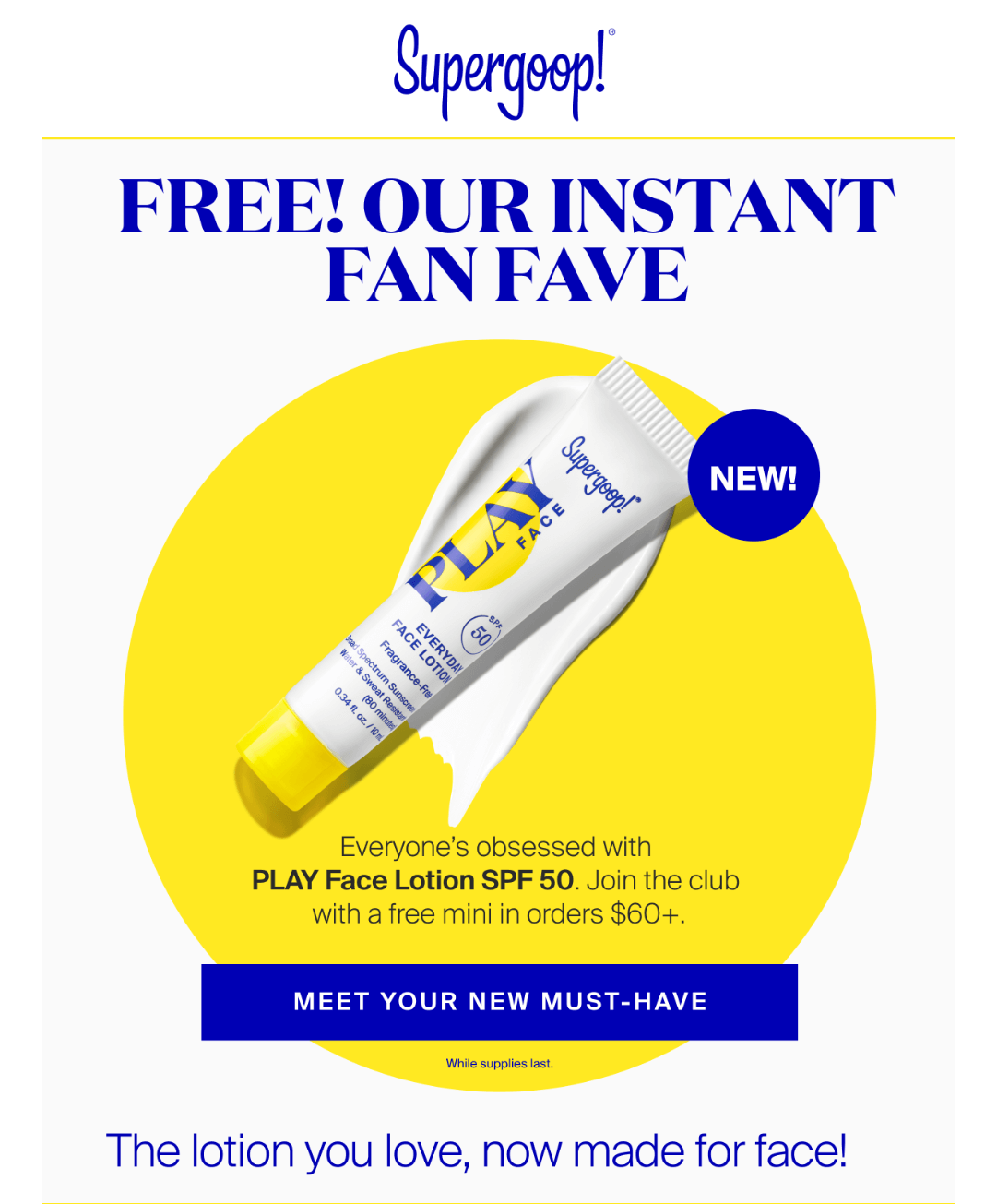
In their email, the message is bold and benefit-driven with a clear CTA and product highlight. Here, it’s all about value and conversion.
However, on Instagram, the product appears in a playful, visual format with a relatable caption: “One thing we will never leave the house without…”
Here, the tone is casual, social, and designed for engagement.
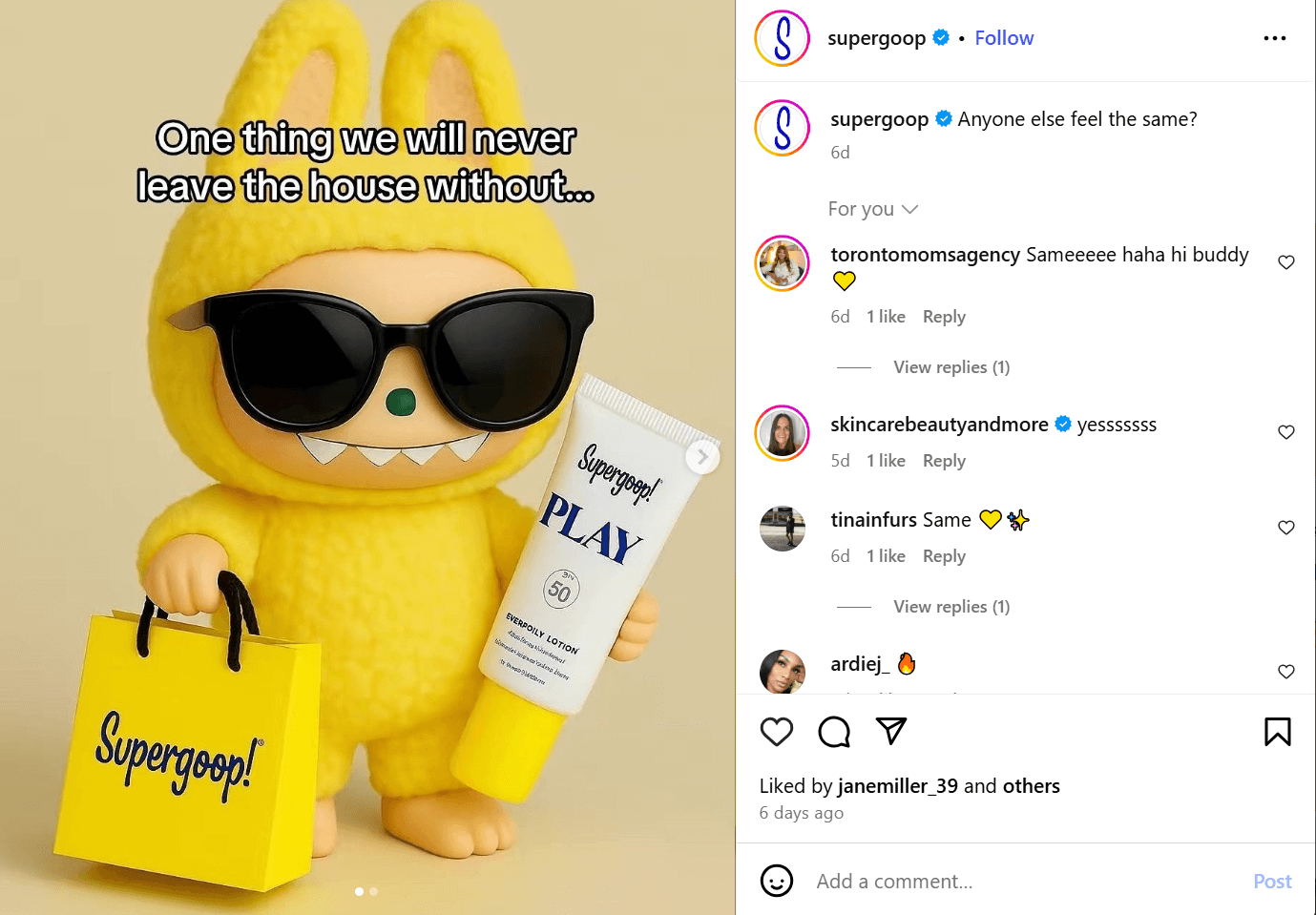
While the format shifts to match the channel, the core message doesn’t change. Everyone’s obsessed with Supergoop’s PLAY line, and you can’t miss it.
Plus, the brand uses the viral Labubu doll to stay relevant, indicating that they are actively monitoring social media for trends.
Examples of Concise Marketing Messaging
By now, we know that great messaging is clear, consistent, and tailored to its channel. But when it’s also concise, meaning it delivers the brand’s value in just a few words, it becomes instantly recognizable.
Let’s look at a few brands that have nailed this. Their messaging is so on point that you can spot them in your inbox, social feed, or search results almost instantly.
Duolingo
With 116.7 million monthly active users, Duolingo has built a strong brand around one simple idea: learning a language should be free, fun, and something you’ll actually stick with.
From its cheeky tone to that slightly aggressive green owl, every part of the experience reinforces this message.
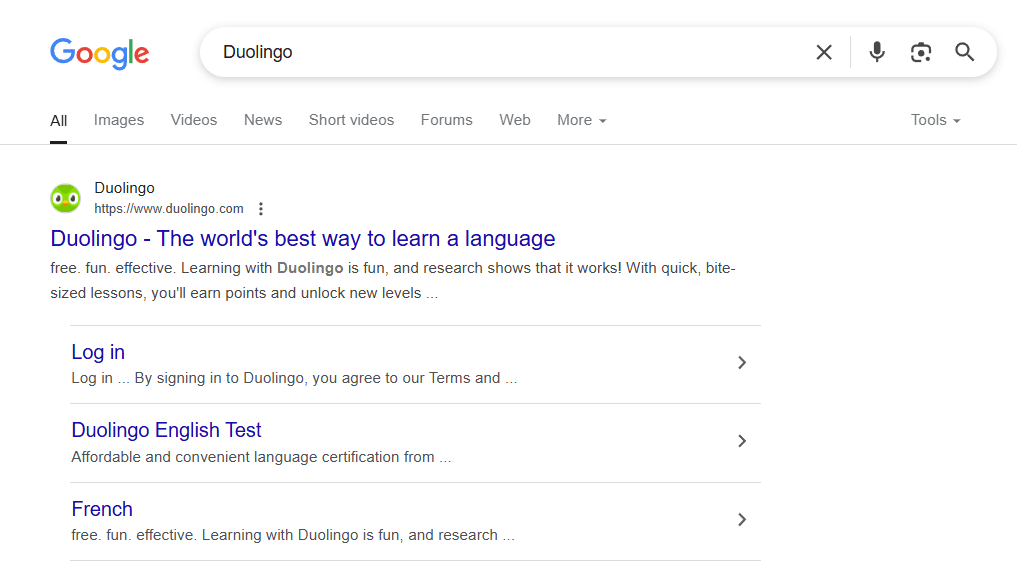
Why it works:
- The message is benefit-first and straightforward. You can learn a language for free at any time.
- The tone remains consistent across all channels.
- It speaks to real motivation. People want to improve their skills without barriers, and Duolingo delivers that with humor and consistency.
Etsy
Etsy’s tagline, “handmade, vintage, custom, and unique,” has remained consistent for over a decade and for good reason.
Their messaging consistently celebrates creativity and individuality. Whether you’re scrolling through their social posts or reading their emails, it always feels like a space made for people who value one-of-a-kind things.
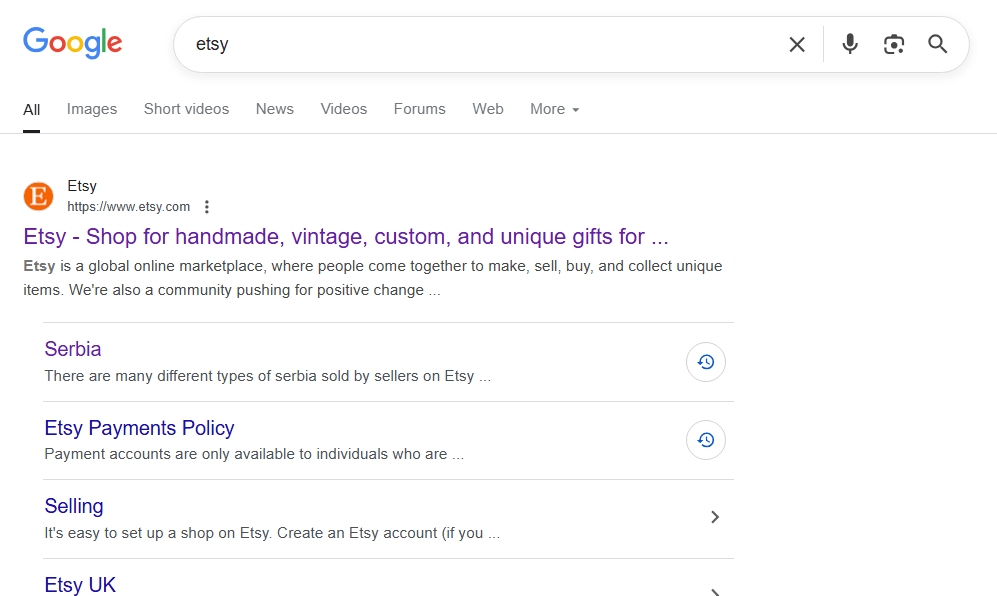
Why it works:
- Phrases like “handmade,” “vintage,” and “independent makers” instantly show how Etsy stands out from big-box platforms.
- Instead of competing with Amazon, Etsy owns its space as the home for creative, one-of-a-kind products.
- The message supports the community, focusing on crafting, creativity, and small businesses.
Grammarly
If you’ve ever subscribed to Grammarly’s emails or are a user, you’ve probably noticed how they sound like a writing assistant, not a SaaS company. And the core message is always right there in the tagline.
Grammarly’s email subject lines make it easy to forget you’re using a software tool. It feels more like a helpful coach who checks in, encourages progress, and keeps you motivated. That’s how you build real connections with users.

Their messaging stays consistent across the board. The tone says, “We’re your writing assistant, and we’re here to help you succeed,” and they follow through week after week.
So far, Grammarly’s approach seems to be working great. According to TechCrunch, its value reached $13 billion in 2021, demonstrating that clear and consistent messaging in marketing can drive substantial growth.
Why it works:
- They make something complex feel easy. Grammarly jumps in right when you need help, without making it feel technical.
- Their emails are personalized and encouraging. Updates like “You were more productive than 93% of users” tie helpful data to their core promise.
- The message focuses on building your confidence wherever writing matters.
How to Create Better Marketing Messaging with Social Listening Data
Strong marketing messaging needs to be aligned with what your audience actually cares about, including their problems, values, interests, and the way they communicate.
To write messages that truly connect, you have to listen first. That’s where social listening comes in. It provides the insights you need to craft a message that feels authentic and relatable.
1. Identify customer pain points from online conversations
Before you can solve a problem, you need to know if it exists. Social listening helps you use conversations that are unfiltered, unscripted, and often brutally honest.
But how do you find these conversations?
Well, you have two options. You can do it manually by digging through forums, social media, reviews, etc., or with a social listening tool. We suggest the latter because sifting through endless tabs and threads can eat up your time and sanity.
Instead of hopping from one platform to another, a social listening tool will let you track keywords, brand mentions, and relevant phrases across the entire web. That means you’re identifying pain points from both prospects and customers. The ones posting in Facebook groups, Reddit, or niche forums asking, “Does anyone know the tool that does X?”
One of the most effective marketing messaging examples is ClickUp. They’ve practically made a sport out of social listening.
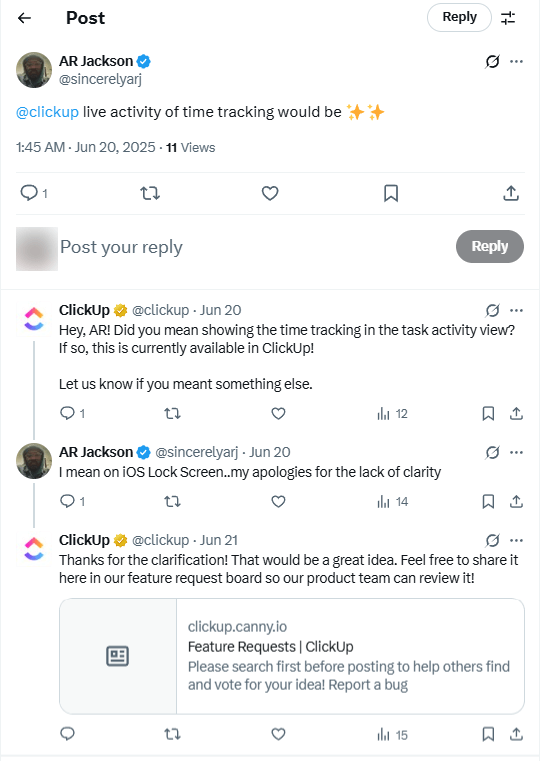
So, when someone tweets a complaint or requests a new feature, ClickUp makes sure to respond to them. You speak, they listen, and then they act. That’s messaging powered by real-time insight.
2. Segment your audience based on preferences
Not every customer is looking for the same thing. Some care about price, others value sustainability. Some want the newest features, while others are just looking for proof that it works.
Social listening helps you go beyond guesswork. By tracking what people are actually saying, you can identify genuine patterns, including conversations about discounts, eco-friendly practices, or product performance.
These insights make audience segmentation more accurate and meaningful. Once you understand what different groups care about, you can tailor your messaging to align with their interests. This way, you make it more relevant, personal, and likely to convert.
For example, suppose you’re a skincare brand and notice a spike in conversations around “fragrance-free” products and sensitive skin. In our case, you can segment that audience and highlight those exact features in your ads and on product pages.
3. Extract phrases your audience uses
When your messaging mirrors the words your audience already uses, it doesn’t sound like a pitch. Social listening helps you find those words, like slang, phrases, hashtags, and even acronyms, that appear in real conversations about your product, category, or competitors.
Instead of saying something generic and formal like “affordable consumer electronics,” you might notice people saying “budget-friendly gadgets.”
For instance, if you’re a fitness brand and your audience keeps mentioning “leg day,” “gym gear,” or “MVP” (most valuable player), using those exact terms in your ads or emails instantly makes your brand feel more in sync with your audience.
It may seem like a small tweak, but it makes your message more human and helps with everything from engagement to SEO to email open rates.
4. Track changes in customer sentiment
If you’re a marketer, you know that customer feelings are changing faster than Instagram’s algorithm.
Sentiment analysis helps you stay in tune with the emotional tone of your audience. Whether the mood is positive, negative, or somewhere in between, it’s your cue to either build on what’s working or address what’s not.
Ensure your marketing team is always tuned in and tracks the reactions in real-time.
For instance, if sentiment dips after a product launch, your next drip campaign could focus on transparency support, or even a lighthearted acknowledgment. Nothing wins hearts like honesty.
5. Spot trends and emerging topics before the competition
If you’re the last brand to talk about a trending topic, nobody will hear you, no matter how well-defined your messaging is.
With social listening, you can monitor spikes in conversation, new hashtags, or shifts in audience interest, giving you the edge to respond before your competitors do.
If you notice, for instance, creators and customers suddenly buzzing about a new skincare ingredient (say, “bakuchiol”), you can weave it into your next product email, blog post, or social content to position your brand as timely and tuned-in.
Jumping in early means adding value while the topic is still hot. That could be a zero-click newsletter with your take or a short LinkedIn post that adds clarity. The goal is to join the conversation while it’s still being shaped and possibly even help shape it.
6. Avoid tone-deaf marketing messaging through real-time feedback
Do you recall the instances when brands posted cheerful promotions during a global crisis? Or when they disregard the emotions of their audience and put a tone-deaf campaign that backfires?
Well, it can happen to anyone. Remember Apple’s iPad Pro ad in 2024? In it, a hydraulic press crushed musical instruments, books, paint, and other creative tools. The ad wanted to symbolize how the iPad can have everything in one place; however, the internet didn’t see it that way.
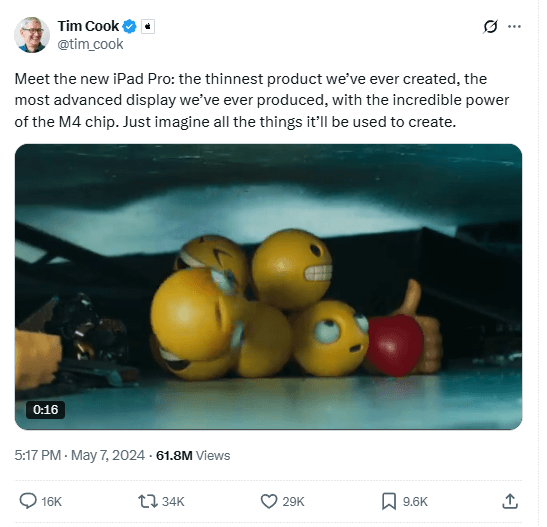
The backlash was swift, with many viewers feeling it sent the wrong message, flattening creativity rather than celebrating it. Apple ultimately apologized and pulled the ad entirely.
This example illustrates that public sentiment can shift rapidly. What sounds bold one week might come off as insensitive the next.
Social listening lets you monitor how people react, not only to your brand, but to cultural moments, competitor missteps, and world events. With that insight, you can adjust your tone, delay a post, and shift strategy before it backfires.
Ready to Craft Resonating Brand Messages?
If you want your brand to stand out and actually stick, you need to listen before you speak.
Social listening helps you understand what makes your audience tick (and what makes them roll their eyes). It allows you to tune in to the conversations that shape perception, trust, and customer loyalty.
The best part is that this isn’t some advanced, out-of-reach strategy, but a simple tactic any brand can use. One that helps you write better copy, avoid backlash, stay relevant, and connect on a human level before your competitors even notice the shift.
Because the brands that listen first are the ones people remember. And those who act on what they hear are the ones who lead.
FAQs
Below, you’ll find answers to common questions about brand messaging and social listening.
1. What’s the difference between social listening and social monitoring?
Social monitoring tracks mentions and engagement, while social listening digs deeper to understand sentiment, trends, and audience behavior. It’s the difference between seeing what people say and understanding why they say it.
2. How often should I use social listening to update my messaging?
It’s best to treat social listening as an ongoing habit, not a one-time task. You can run monthly checks to spot shifts in sentiment, trends, and feedback that can shape your messaging. If you’re launching something new, such as a product or service, consider checking in more frequently to stay responsive and in tune with your audience.
3. Can small businesses benefit from social listening too?
Even without a big budget, small businesses can use free or affordable tools to track conversations and gain insights. Listening to your community gives you a competitive edge, especially when resources are limited.
4. What tools can I use for social listening?
There are several options depending on your budget and needs. Popular tools include Sprout Social, Hootsuite, and Mention. Even manual tracking on platforms like Reddit, Twitter/X or TikTok can offer valuable insights.
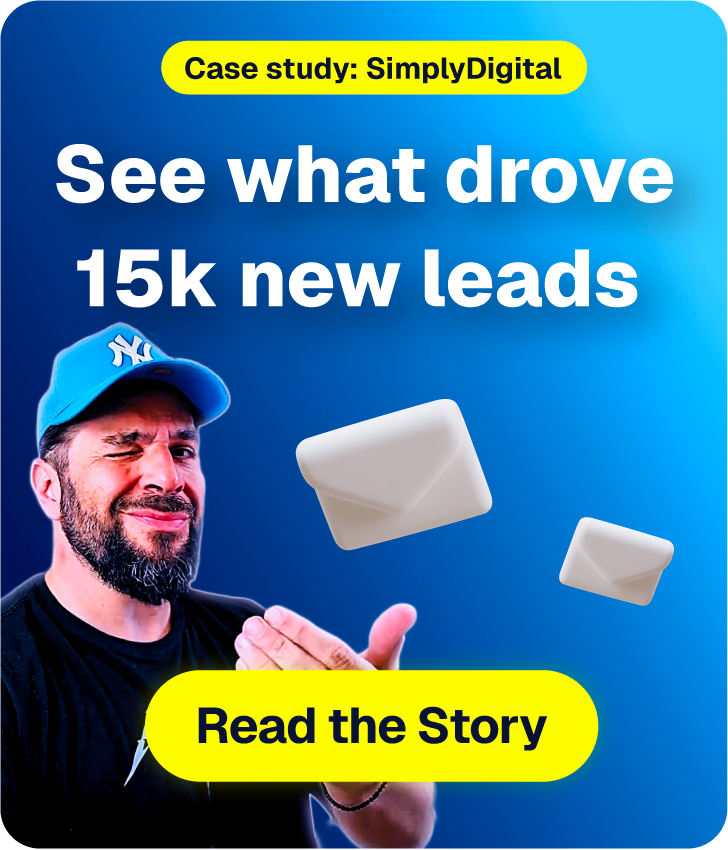
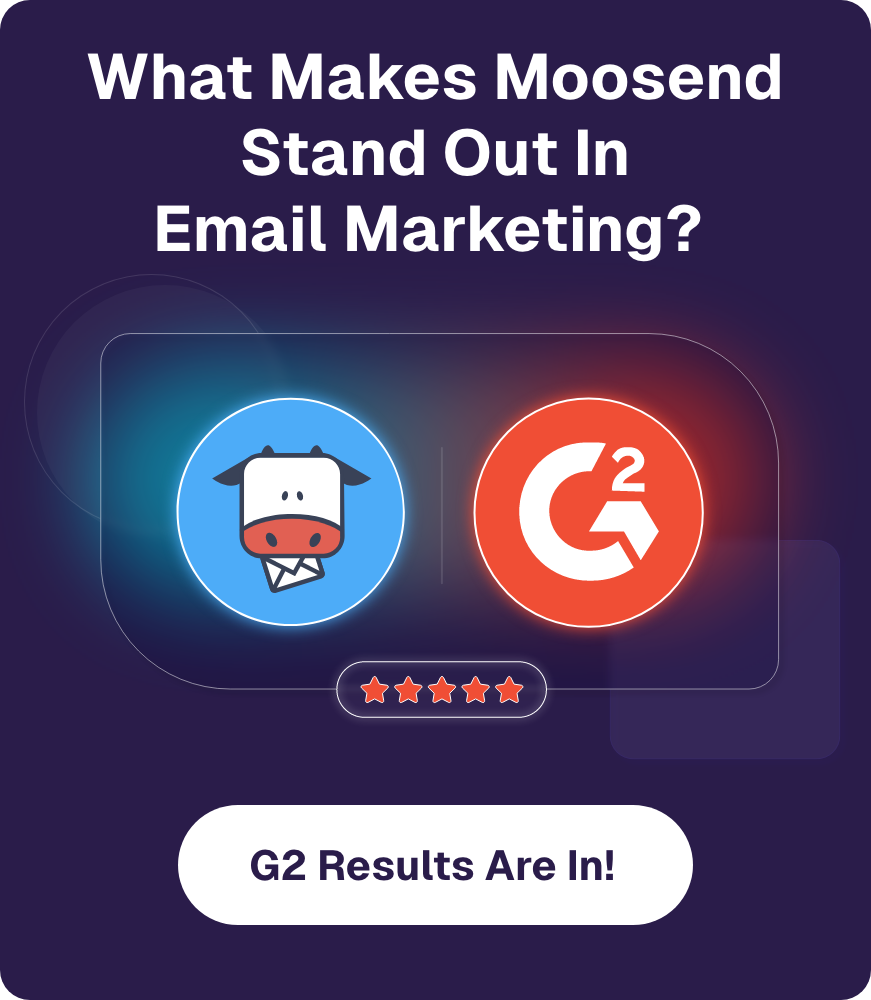


 Published by
Published by
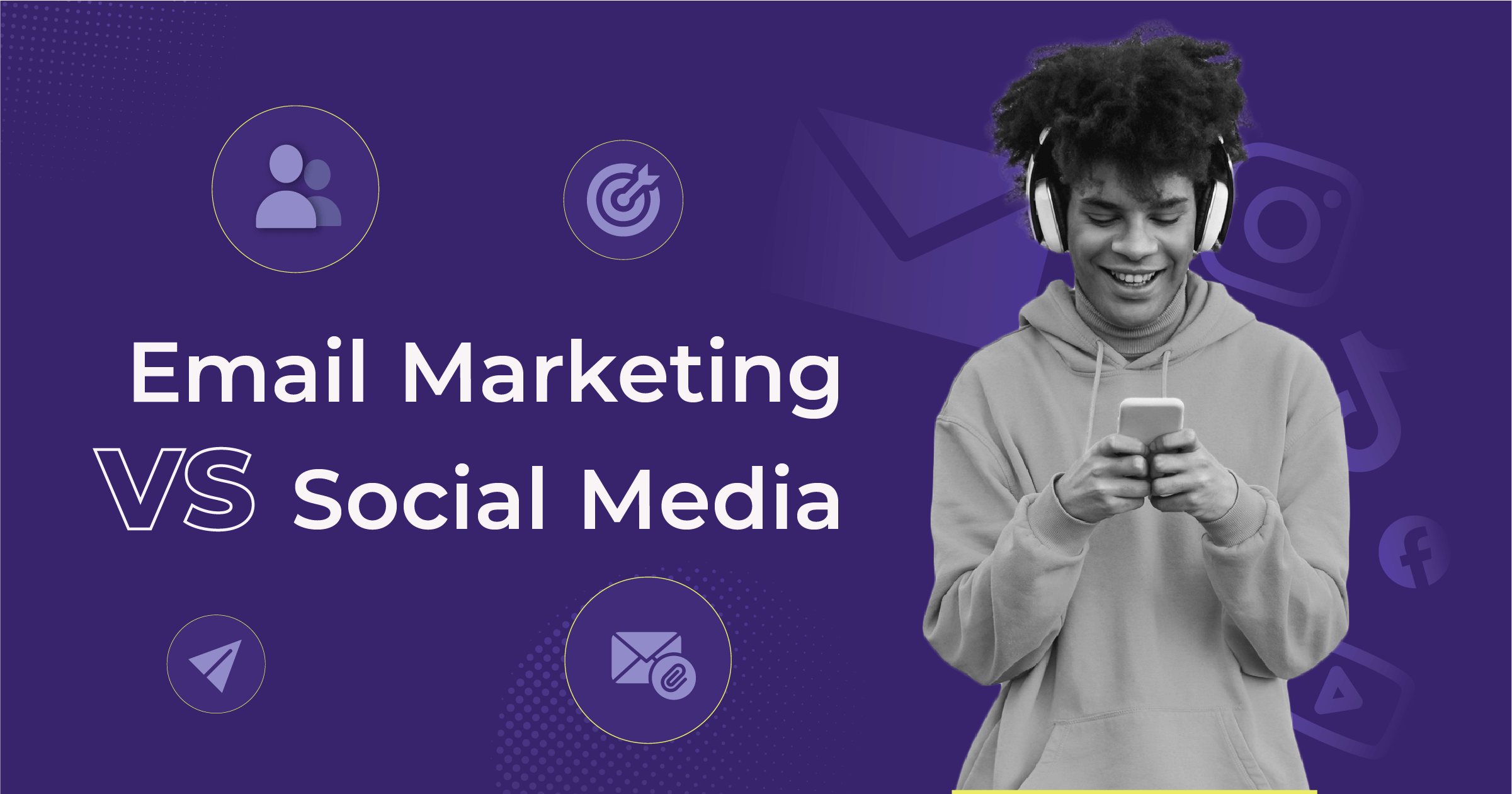

 Published by
Published by